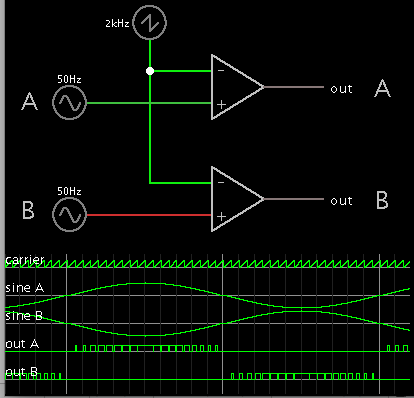khaja_minhaj
Junior Member level 3
Hi!
I need to convert incoming 230V ac 50hz frequency to 60hz with same voltage. The output has a amps rating of 36A.
My idea is to step down 230v to 12 v and digitalize using a diode and make it to 5v using resistor
network. This is fed to the microcontroller's gpio pin and the microcontroller can be used to generate pwm pulses according to the frequency of the incoming signal. then using IGBTs to convert it to AC signal. The microcontroller gives its output through two GPIOs. I have seen this on a website Romanblack.com
My main doubt is, how am I going to calculate and divide PWM pulses time interval for a 60hz frequency?
Thanks
I need to convert incoming 230V ac 50hz frequency to 60hz with same voltage. The output has a amps rating of 36A.
My idea is to step down 230v to 12 v and digitalize using a diode and make it to 5v using resistor
network. This is fed to the microcontroller's gpio pin and the microcontroller can be used to generate pwm pulses according to the frequency of the incoming signal. then using IGBTs to convert it to AC signal. The microcontroller gives its output through two GPIOs. I have seen this on a website Romanblack.com
My main doubt is, how am I going to calculate and divide PWM pulses time interval for a 60hz frequency?
Thanks

